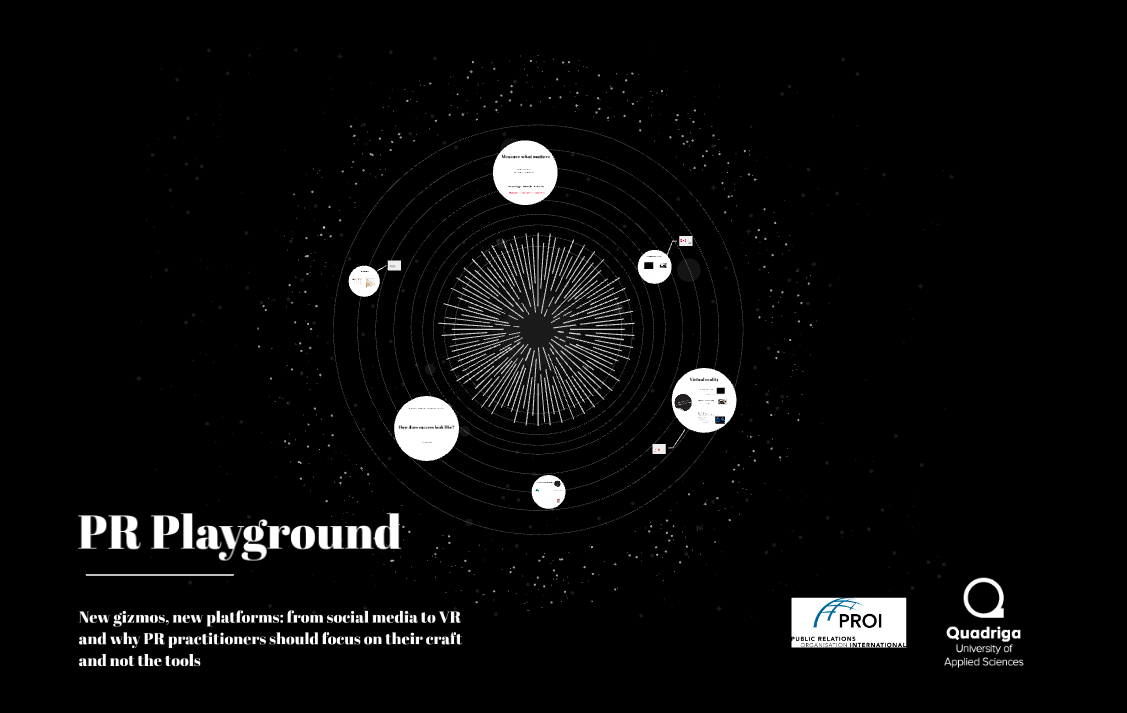Augmented reality, virtual reality and artificial intelligence are interesting technological developments that PR practitioners could use for their organisations and clients. At the PROI Worldwide meeting in Bucharest (PROI is the longest-running partnership of independent public relations agencies) practitioners were more concerned with how these creative applications can support their work and, most importantly, how they can measure their effectiveness.Â
The threatening opportunity
There are so many items of the 2020 web forecasts from TrendOne that seem completely beyond the reach, scope and knowledge of PR practitioners. To add insult to injury, these seems to come at a time when practitioners already feel left behind by technology with many in Europe and Asia Pacific reporting tactical but not strategic skills.
New developments thus are for practitioners, of any kind I dare say, a threatening opportunity where they could be noticed for their creative and innovative approaches even if the mechanisms of monitoring and measurement aren’t quite there.
Back to the basics: PR measurement fundamentals
In my view, there are three major questions one needs to ask when embarking on the usage of any new tool, concept, technology or whatever it may be.
- What is the business/organisation trying to achieve?
- What is the PR objective? (That is what is PR supposed to do in order to help the organisation meet that goal; most PR objectives for instance fit into knowledge – attitude – behaviour pattern and most often than not, has something to do with reputation)
- How does success look like for PR?
Knowledge – Attitude – Behaviour
Going back to point 2, the PR objectives usually gravitate around informing/raising awareness/setting the agenda and they move then progressively to maintaining/changing attitudes which in the end are supposed to incentivize certain behaviours. Equally, all the work around knowledge-attitude-behaviours is at times linked with reputation.
In this sense, it might be wise to consider how the reputation of an organisation could be influenced by the PR’s use of AR/VR/AI. That is how would their use of AR/VR/AI influence the perception (so attitude) of their stakeholders?
It is useful in this context to consider the measurable dimensions of reputation, and RepTrack’s 7 dimensions are extremely useful here. So, the use/or recommendation of use of AR/VR/AI has to be measured into the influence on the perception of the dimensions of reputation of the organisation. These, in turn would be measured into changes the supportive behaviour.

The measurement is (mostly) outside the platform
While with social media some of the metrics would be within the platform, for AR/VR/AI the measurement is outside the platform. To assess the perception/attitudinal changes post-exposure as well as the behavioural changes post-exposure, PR practitioners would need a mix of “classical” qualitative and quantitative methods (surveys, focus groups, market data analysis). This means that the PR practitioner’s most difficult task perhaps will be:
- segmentation
- tracking of the various stakeholder groups addressed with these technologies (where the behavioural changes might not be immediately visible)
- building feedback and monitoring mechanisms into various channels that would enable one to correlate a behaviour with the AR/VR/AI exposure.
Of course, AMEC’s integrated evaluation framework would be useful to clarify the differences between the activities and outputs versus the elements that do truly matter: outtakes and outcomes.
My full slides from the session are below:
